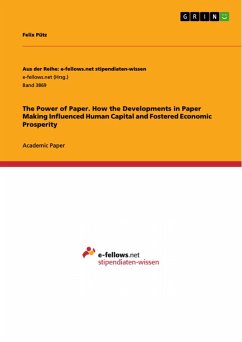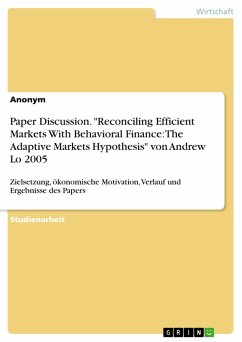Academic Paper from the year 2020 in the subject Business economics - Economic and Social History, grade: 1,3, Maastricht University, language: English, abstract: The Second Industrial Revolution (1870-1914) describes the rapid industrialization of the economy and huge developments in people's daily life due to enormous technological innovation. Therefore, it is oftentimes also called the science based revolution. One of the many important innovations was the development of modern paper making. This innovation reduced the cost of producing paper tremendously, stopped enormous paper shortages from the beginning of the 19th century, and increased the durability, as well as stability of the paper. According to Kuznets & Murphy, modern economic growth depended on the growth of knowledge and human capital. Therefore, through fostering this growth, developments in paper have had a strong effect on the economic prosperity of a nation. This effect can for example be seen in the ancient Egyptian culture, which developed and used the papyrus as their paper and consequently managed to become one of the most advanced societies of that time. The importance of paper can also be seen when we compare the developments in Europe and North America to Asia. Here the rise of books and newspapers did not occur at the same rate as in the Western World and led to a long time laggard economic development in those countries. In order to gain more insights into the linkages between developments in paper making and economic prosperity, this paper addresses the following research question: How did the developments in paper making influence human capital and foster economic prosperity? In order to answer this research question, this paper will first analyze the developments in paper making and link them to the rise of newspapers and books. Afterwards, it will link the rise of newspapers to developments in education and literacy. Finally, these developments will be connected to the concept of human capital and economic prosperity. Lastly, this paper will provide a conclusion of the main findings.
Dieser Download kann aus rechtlichen Gründen nur mit Rechnungsadresse in A, B, BG, CY, CZ, D, DK, EW, E, FIN, F, GR, HR, H, IRL, I, LT, L, LR, M, NL, PL, P, R, S, SLO, SK ausgeliefert werden.









